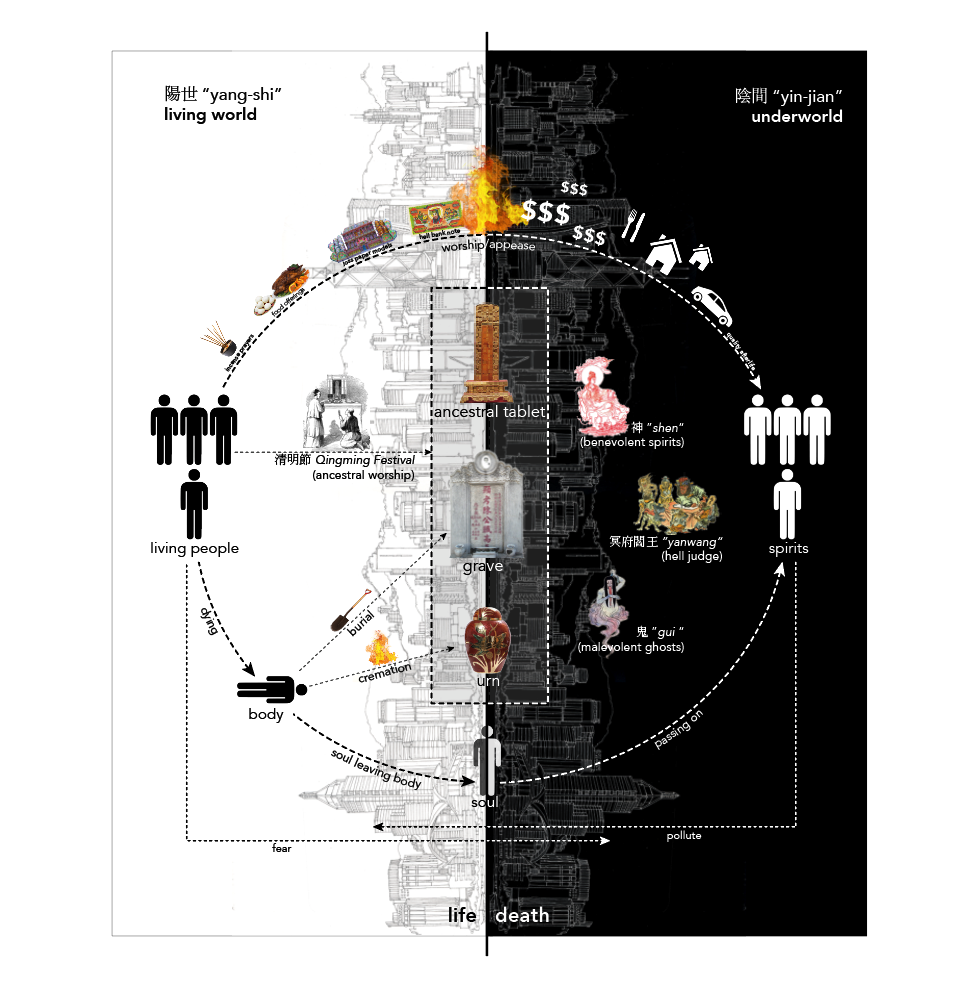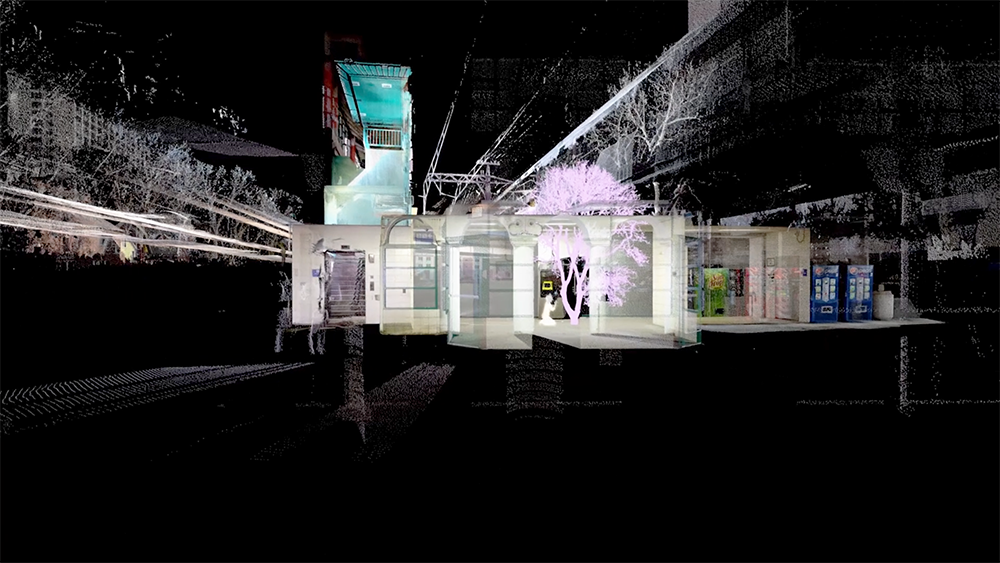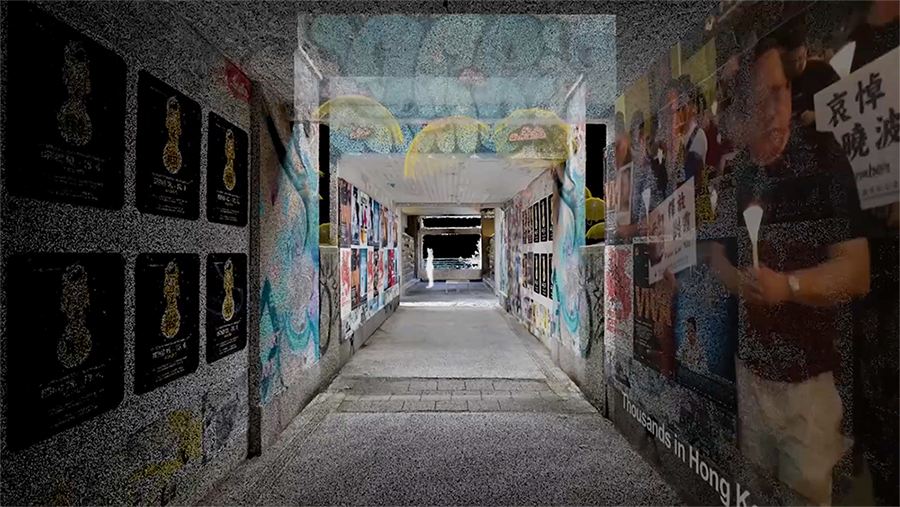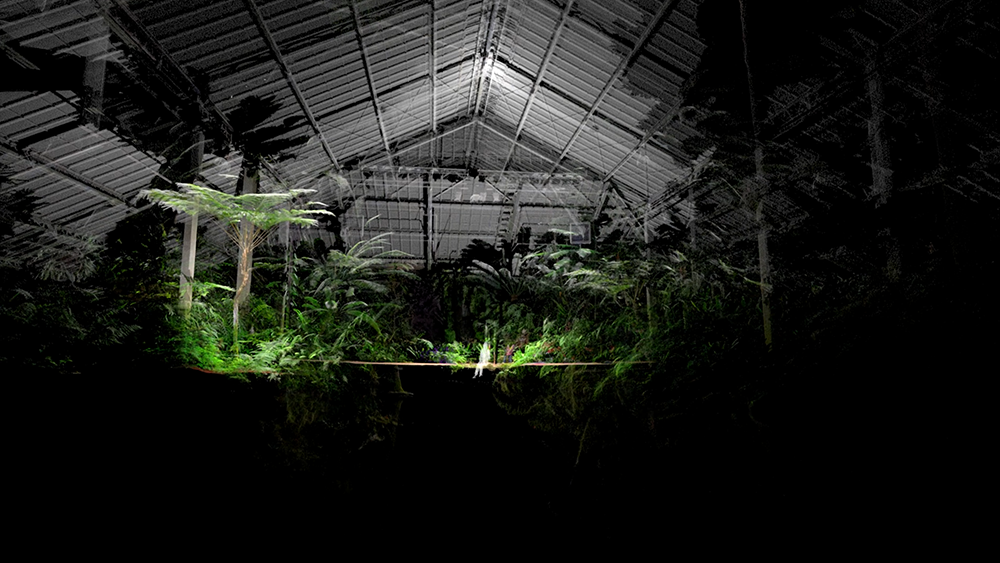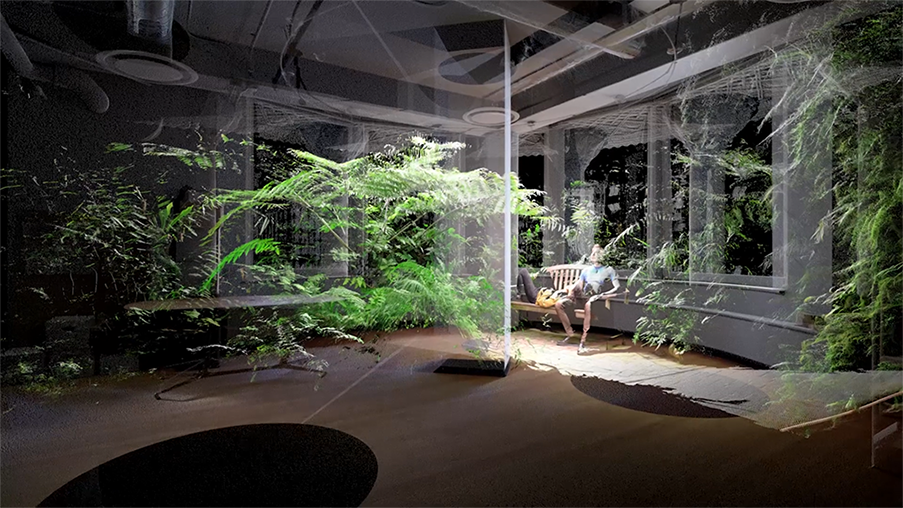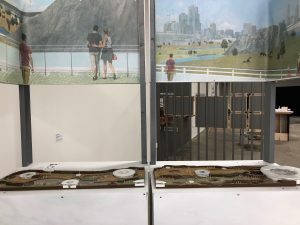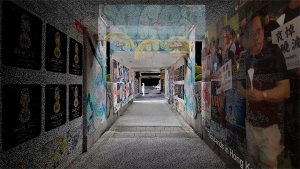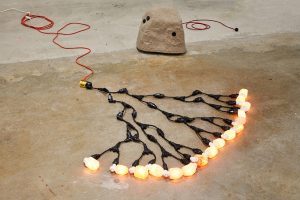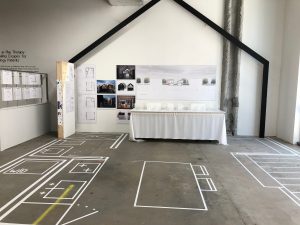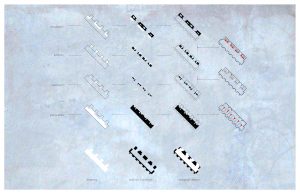Between the ubiquity of digital imaging and the frenzy of building/rebuilding of our cities, we live instant and fragmented existences. Memories – recorded by digital devices, stored in the Cloud, accessed via social media – paradoxically last both forever and moments only. Holograms become the new urban fantasy; we seem to no longer believe in ghosts. It is within this post-post-modern context of digital impermanence that the virtual world can be understood as a heterotopia analogous to the underworld of Chinese folk religion: a stratified, intangible assemblage that simultaneously mirrors and subverts the physical world through its mechanics, representations, and rituals. For those holding spiritual beliefs, immaterial spaces are highly significant to the situating of the dead, as well as the mourner’s sense of continuing bond to them. In this sense, sites of mourning and remembrance are mediated territories of the absent: through the evocation of bodies, spaces, and objects that are not physically present, our memory and imagination transport us from the physical to the virtual, and vice versa. Such understanding of virtuality destablizes any binary opposition between “real” and “unreal;” traces of the past, present, and future become inextricably intertwined. Through the medium of film, this thesis meditates on a postdigital narrative where 3D scanning and motion-capture technologies are used to create immersive virtual landscapes for mourning and remembrance. The remembered, experienced, and imagined come together to become architectural: we construct rooms, buildings, streets, even cities like an ever-changing palimpsest that carries a multiplicity of histories. In such strange sites suspended between place and placelessness, an absence becomes a form of presence. If we could understand how virtuality generates phantasmatically attainable spaces that transcend Euclidean geometries, can we move beyond the false polarity of the authentic memory vs. technological mediation? Can we recognize and reconcile with the virtuality that deeply penetrates our collective consciousness, and allow it to bear witness to our grief?



